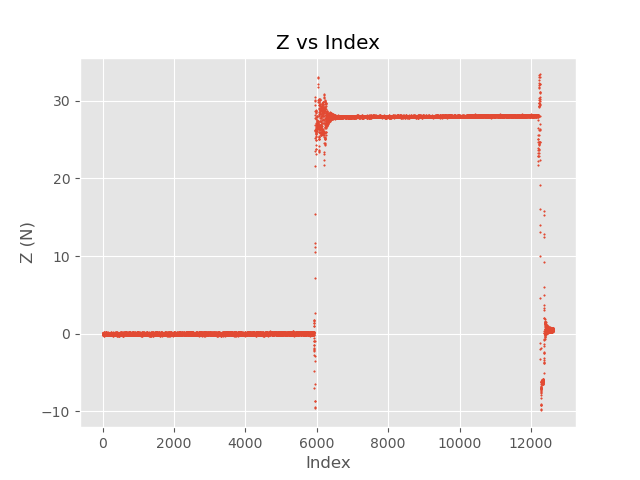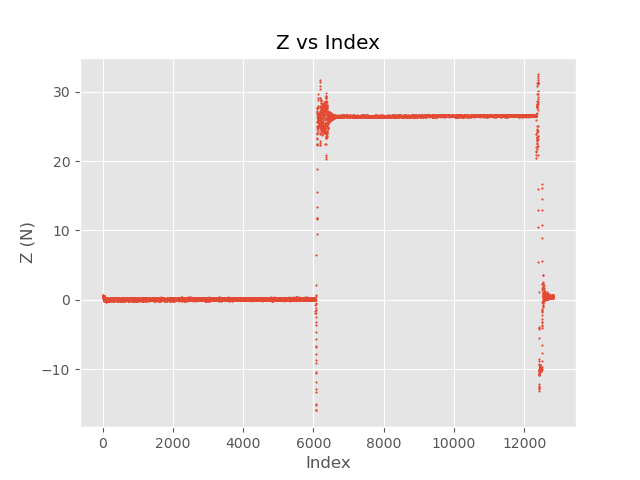I open a support ticket so that we can better support you on this.
You wrote that you post-process the data of the FT300. Can you see the same deviation in the raw data ?
i filtered the fluctuating force readings, get the average for each direction, and find the resultant force from x, y and z directions through 3 axis pythagoras theorem

 bcastets
bcastets


Hi,
I am currently using FT300 for measuring the weight of boxes with solid items within. For gripper, i am using an array of suction cups for picking the boxes, and the central z axis of the gripper is offset by 11cm from the central z axis of the FT300. For data collection, i am using StreamToCSV application developed by DOF Robotiq itself, hence, will be getting values of Fx Fy Fz Mx My Mz. Note that box cg is within the centre of the box, and aligned with Z axis of gripper The sequence of picking is:
1: Set payload and COG of system without box picked
2: Go to above box
3: Zero FT sensor
4: Wait 60 seconds (for analysing force stability)
5: Set payload and COG of system with box picked
6: Move 1 cm down to have suction cups in contact of box
7: Turn on vacuum pump and pick box
8: Move 10cm in positive Z direction
9: Wait 60 seconds (for analysing force stability)
10: Move 10cm in negative Z direction
11: Turn off vacuum pump and release box
12: Set payload and COG of system without box picked
After getting the force readings through StreamToCSV, i filtered the fluctuating force readings, get the average for each direction, and find the resultant force from x, y and z directions through 3 axis pythagoras theorem.
What baffles me is that after multiple runs, the resultant weight is getting lesser and lesser. For example, for a 30N item, 1st run result will be at 29N, and at the 20th run, it can go down to 20N even after ft sensor is zeroed.
I would gladly appreciate if anyone knows the solution to this, and if you have experienced the same. Thanks.